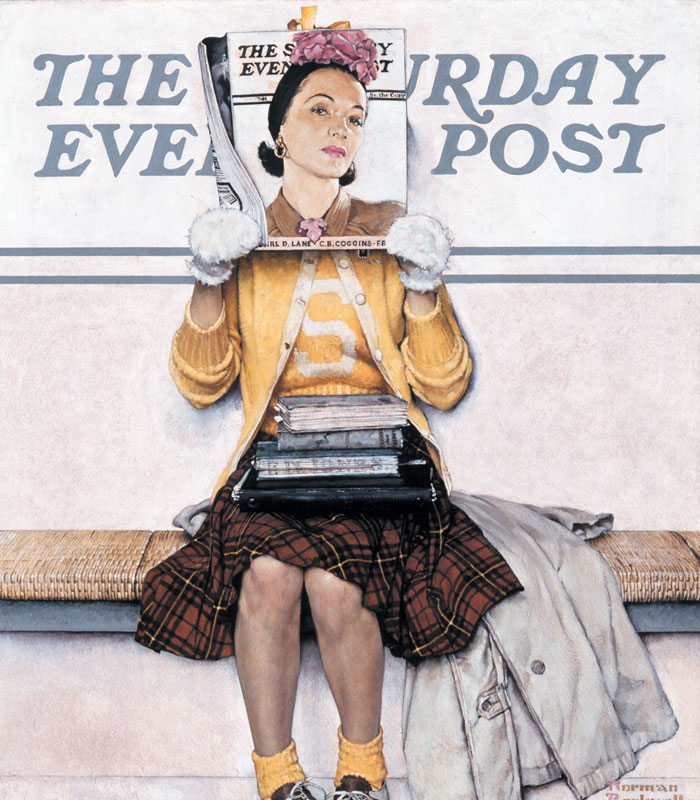STORY SPARKS (GRADES K-5)
Use Norman Rockwell’s Post covers to spark creative writing.
Rockwell is known as The Saturday Evening Post’s most famous illustrator. He submitted his first successful cover painting, “Mother’s Day Off”, to the Post in 1916. Over the next Forty-seven years his work appeared on the cover a total of 323 times. Each cover that he created tells a story. Through his work, he presents images of everyday life in America, childhood, civil rights, war, and change. He was known for finding the special stories in moments that others took for granted.
[Link: Learn more from the Curator] [Link: Visit the Archives]
GOALS
- Spark creative writing
- Build language skills
- Explore dialogue
- Notice detail in illustration
- Participate in collaborative conversation
MATERIALS
- Printed or digital copies of various Saturday Evening Post covers. [insert link to images].
- Writing paper
- Index Cards

Girl Reading the Post, Norman Rockwell. 1941
©1941 SEPS: Licensed by Curtis Publishing, Indianapolis, IN (C388)
[One line activity for teaser: In five lines or less tell the story of what is happening in this picture.]
ACTIVITY
Observe
- Choose several Saturday Evening Post covers to share with students. Ask:
- What do you notice about this painting?
- Who are the characters in this painting? What do you notice about them? What are they wearing? What expressions are they making?
- What are the characters doing? How can you tell? How do you think they might be feeling?
- Where are the characters? Are they inside or outside? How can you tell?
- What is the weather like? How can you tell?
- If the characters could talk, what do you think they would say?
- Do you think this was painted today or in the past? Why or why not?
Explore
- Use the covers that you have chosen to spark creative writing and language skills. Try some of the following exercises with students:
- Have students come up with as many words as possible to describe one of the illustrations. Talk about the meaning of each word that you list. As you come up with descriptive words, use the image to introduce new vocabulary. When you have completed your list, turn it into a poem with the starting line, In this picture I see…
- Set out three illustrations. Call a student to come up and act out one of the pictures. Challenge others to guess which picture he or she is acting out.
- Have students write a short story about their image of choice.
- Show a Post cover. Explain that the picture shows us the middle of the story. Challenge children to come up with an illustration that shows what happened before and after the image on the cover.
- Have students work in teams to come up with a short conversation between two of the charters in an illustration.
- Distribute illustrations and have students come up with their own title.
- Choose a Post cover. Ask students, does this look like something that could or would happen to you? Why or why not?
- Have students write a letter to a character in the illustration telling them about how life is different today.
- Show two different Post covers and challenge students to merge them into one story.
EXTENSIONS
Try these activities to go even farther with your explorations.
Create
- Have students create their own Post covers to depict everyday life in America as they see it. Then have them write a short story, song, poem or play to go along with their cover.
Reflect
- In small groups, have students reflect upon the process of using art to spark their writing and conversation. Have them discuss the following: What did you like about it? What was hard about it? What about it was helpful?

